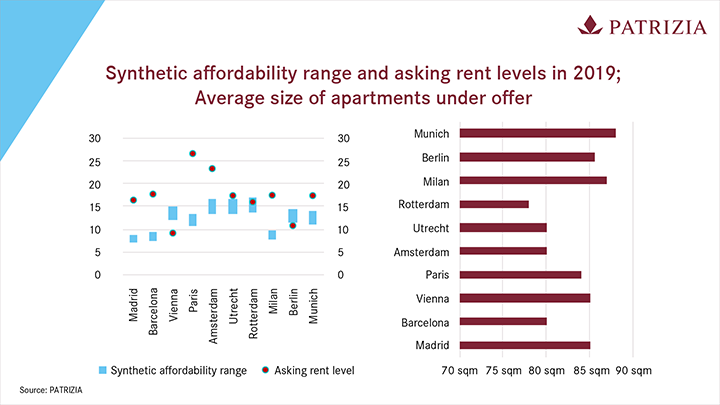Housing affordability is a burning topic, but the term first needs to be understood before it can be tackled in any meaningful way, argues Marcus Cieleback in a new report.
In the past two years, three of Europe’s most iconic cities – Barcelona, Berlin and Paris – have introduced controls to clamp down on spiralling rental prices. London is also considering controls, while Amsterdam has introduced draft bylaws to stop investors buying new-builds to rent them out expensively.
Housing affordability is becoming a hot button topic in ever more cities because it is hitting people where it hurts most – their wallets. Feeling themselves squeezed by increasing rents and housing prices, residents are making their anger felt through ballot boxes. Politicians are responding with policies aimed at dampening rental and price increases.
These policies will be self-defeating in the longer term even if they provide relief to today’s tenants, argues Marcus Cieleback, Chief Urban Economist at PATRIZIA, in a new report. “There is no denying there is an affordability problem,” says Cieleback. “But go beyond the anger, and you find that there has been no precise definition of what affordability is.”
In Priced Out: Europe’s affordability challenge, Cieleback explains that rising rents and prices are a result of urbanisation, a decades long trend. Given the impact of COVID-19, this will continue. Wages are likely to stagnate, rural migration to continue and housing costs to climb. For while the pandemic has had significant impacts on many areas of the economy, it has not reversed rising rents and housing prices, particularly for properties in the middle or lower end of the market.
















